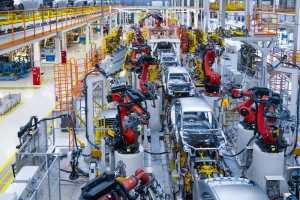please click here:
https://www.unicornendoscope.com/endoscopy-medical-equipment.html
Endoscopy systems have transformed the landscape of modern medicine, enabling physicians to visualize internal organs without invasive surgery. From early fiber-optic scopes to today's digital high-definition platforms, these systems provide crucial diagnostic and therapeutic insights. This article explores the core technology, types, applications, advantages, and future trends of the Endoscopy system, giving a comprehensive view of how it supports better healthcare outcomes.
Understanding What an Endoscopy System Is
An endoscopy system is a medical imaging setup designed to examine the interior of a body cavity or organ through a flexible or rigid tube equipped with a camera and light source. The system captures real-time images displayed on a monitor, allowing doctors to diagnose and treat conditions involving the digestive tract, respiratory system, urinary system, and even joints.
The modern Endoscopy system integrates optical, digital, and robotic technologies, making it a vital tool in minimally invasive medicine. Its precision, safety, and efficiency have made it indispensable in hospitals and surgical centers worldwide.
Core Components of an Endoscopy System
An endoscopy system is composed of several key elements that work seamlessly to deliver accurate imaging and control:
-
Endoscope: A flexible or rigid tube that enters the body and carries the imaging unit.
-
Light Source: Provides consistent illumination, often LED or xenon-based.
-
Camera Head: Captures images transmitted from the endoscope tip.
-
Video Processor: Converts optical signals into high-quality digital images.
-
Monitor: Displays live or recorded video for analysis.
-
Insufflators and Pumps: Manage air or fluid flow to expand organs for visibility.
-
Recording Devices: Store data for medical documentation and training.
Together, these elements enable a clinician to visualize fine details and perform intricate procedures with precision and minimal trauma.
Types of Endoscopy Systems
Different Endoscopy systems are designed for specific diagnostic and surgical applications. Below is a comparison of major types:
| Type | Application | Characteristics | Invasiveness |
|---|---|---|---|
| Gastrointestinal Endoscopy | Digestive tract examination | Flexible scope, camera, light | Minimally invasive |
| Laparoscopy | Abdominal and pelvic surgery | Rigid scope, trocar access | Minimally invasive |
| Bronchoscopy | Airway and lung inspection | Thin flexible tube | Minimally invasive |
| Arthroscopy | Joint inspection and repair | Rigid, miniaturized scope | Minimally invasive |
| Cystoscopy | Urinary tract analysis | Rigid or flexible scope | Minimally invasive |
| ENT Endoscopy | Nose, throat, and ear | Narrow scope for small cavities | Minimally invasive |
Each category serves unique medical fields but shares the common objective of reducing patient trauma while increasing diagnostic precision.
Technological Advancements in Modern Endoscopy Systems
Recent decades have brought rapid innovation to endoscopy technology. The evolution from fiber-optic visualization to fully digital and robotic-assisted systems has greatly improved image quality, mobility, and ergonomics.
-
4K and 3D Imaging: Modern systems provide ultra-high-definition visuals with depth perception, crucial for delicate surgeries.
-
AI Integration: Artificial intelligence aids in detecting abnormalities and analyzing tissue in real time.
-
Wireless Capsule Endoscopy: A swallowable camera capsule that records images of the digestive tract without invasive procedures.
-
Robotic Assistance: Enables surgeons to perform complex tasks with micro-precision and minimal human error.
-
Enhanced Sterilization Systems: Ensures better infection control, which is critical in clinical settings.
These innovations not only enhance diagnostic accuracy but also shorten recovery time and improve patient comfort.
Applications of Endoscopy Systems in Medicine
Endoscopy systems play a central role in a wide range of medical specialties.
-
Gastroenterology: For detecting ulcers, tumors, and inflammatory conditions.
-
Pulmonology: Used for airway visualization, biopsy, and foreign object removal.
-
Gynecology: For assessing reproductive organs and assisting in fertility treatments.
-
Orthopedics: Allows internal joint visualization and surgical repair.
-
Urology: Helps diagnose urinary tract blockages, stones, or malignancies.
Beyond diagnostics, endoscopy systems are extensively used for therapeutic procedures such as polyp removal, stent placement, and tissue biopsy. This dual function makes them one of the most versatile instruments in modern healthcare.
Benefits of Using an Endoscopy System
The Endoscopy system offers several advantages over traditional surgical techniques:
-
Minimally Invasive: Requires only small incisions, reducing pain and scarring.
-
Quick Recovery: Patients recover faster, lowering hospitalization costs.
-
High Diagnostic Accuracy: Real-time visualization allows immediate assessment.
-
Reduced Risk of Complications: Limited tissue damage and better infection control.
-
Cost Efficiency: Despite initial setup costs, long-term savings are significant due to lower surgical expenses.
These benefits underscore why endoscopic methods have become a standard across multiple medical disciplines.
Comparing Traditional Surgery vs. Endoscopy System
| Parameter | Traditional Surgery | Endoscopy System |
|---|---|---|
| Incision Size | Large | Small or none |
| Recovery Time | Long | Short |
| Scarring | Noticeable | Minimal |
| Infection Risk | Higher | Lower |
| Hospital Stay | Several days | Often same-day discharge |
| Cost Efficiency | Moderate | High in long term |
| Image Guidance | Limited to human vision | Real-time digital view |
This comparison highlights the substantial efficiency gains and patient comfort offered by modern endoscopy systems.
Challenges and Considerations
Despite their many advantages, Endoscopy systems are not without challenges.
-
High Equipment Cost: Advanced systems can be expensive, particularly for smaller clinics.
-
Training Requirements: Skilled operation demands continuous professional education.
-
Maintenance Needs: Optical calibration and sterilization are critical for safety.
-
Potential for Equipment Damage: Flexible scopes are delicate and require careful handling.
Nevertheless, manufacturers are constantly improving durability and user-friendliness, ensuring these systems remain reliable and accessible.
Future Trends in Endoscopy Technology
The next generation of Endoscopy systems will likely combine artificial intelligence, machine learning, and enhanced imaging sensors. Real-time pathology analysis, robotic integration, and remote surgical assistance will redefine how procedures are performed.
Emerging developments include:
-
AI-assisted Lesion Detection: Automated identification of early-stage cancer.
-
Augmented Reality (AR) Visualization: Overlaying digital data on live images for precision.
-
Micro-endoscopy: Ultra-thin devices that access previously unreachable areas.
-
Cloud-Based Image Storage: Enables global sharing of diagnostic data for collaboration.
Such innovations promise to revolutionize both diagnostics and treatment efficiency in the coming decade.
Choosing the Right Endoscopy System for Your Facility
Selecting the appropriate Endoscopy system depends on clinical needs, budget, and future scalability. Key factors include:
-
Imaging Resolution: Opt for HD or 4K for advanced surgical applications.
-
Ergonomics: Lightweight, user-friendly designs enhance handling during procedures.
-
Compatibility: Ensure integration with existing hospital IT and recording systems.
-
After-Sales Support: Technical training and service maintenance are essential.
-
Upgradability: Choose modular systems that can adapt to future technology updates.
By focusing on these aspects, hospitals can achieve both clinical excellence and cost-effectiveness.
Environmental and Safety Aspects
Modern manufacturers prioritize sustainability in Endoscopy system design. Reusable components, eco-friendly sterilization processes, and energy-efficient light sources contribute to a lower carbon footprint. In addition, advanced safety features, such as leak detection and insulation monitoring, protect both patients and operators.
The Global Market Outlook
The global endoscopy market continues to grow rapidly, driven by increasing demand for minimally invasive procedures and the expansion of healthcare infrastructure. Technological innovation, particularly in AI and imaging sensors, will keep the Endoscopy system at the forefront of medical technology evolution.
Conclusion
The Endoscopy system stands as one of the most impactful innovations in modern healthcare. With superior imaging, precision, and minimally invasive capabilities, it continues to redefine diagnostic and surgical standards. As technology evolves, future endoscopy systems will become smarter, more affordable, and more integrated—ushering in a new era of medical excellence.
Frequently Asked Questions
1. What is the purpose of an endoscopy system?
It allows doctors to view internal organs and perform procedures without open surgery, offering precise and minimally invasive diagnostics.
2. How does an endoscopy system work?
It uses a camera and light source at the tip of a flexible or rigid scope to capture and transmit live internal images to a monitor.
3. What are the main types of endoscopy systems?
Gastrointestinal, laparoscopic, bronchoscopic, arthroscopic, cystoscopic, and ENT systems.
4. Are endoscopy procedures safe?
Yes, they are generally safe with minimal risk compared to traditional surgery when performed by trained professionals.
5. What is the future of endoscopy technology?
The integration of AI, robotics, and real-time imaging will make endoscopy more efficient, accurate, and widely accessible.
Summary
This blog explores the evolution, technology, and applications of the modern Endoscopy system. Covering its components, benefits, comparisons, and future trends, it highlights how digital innovation and minimally invasive techniques are transforming medical diagnostics and surgery worldwide.






